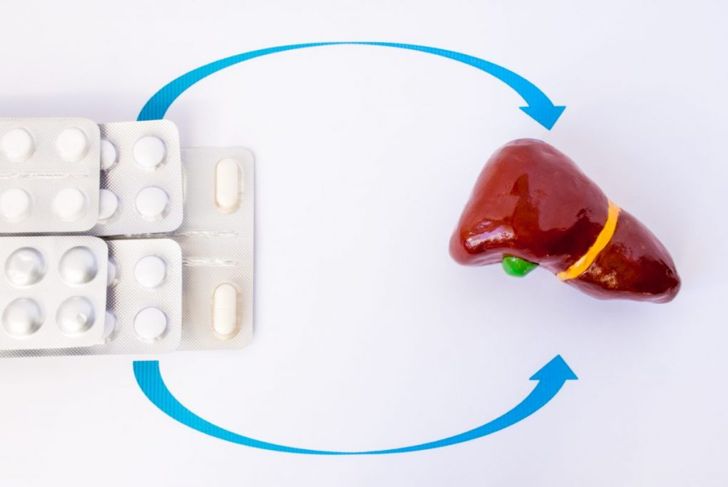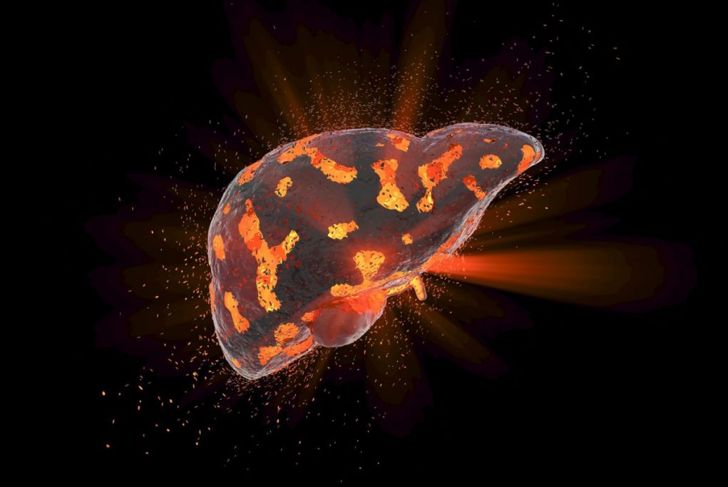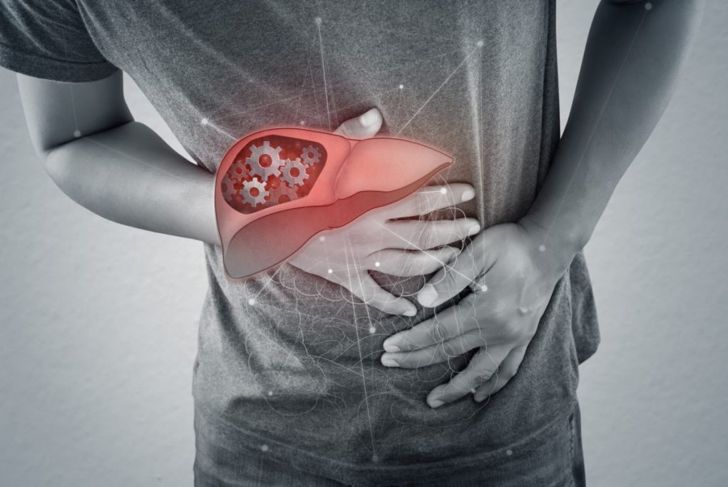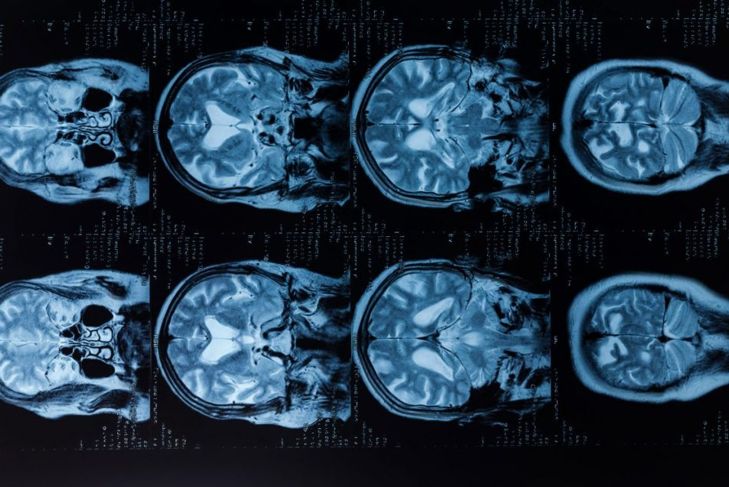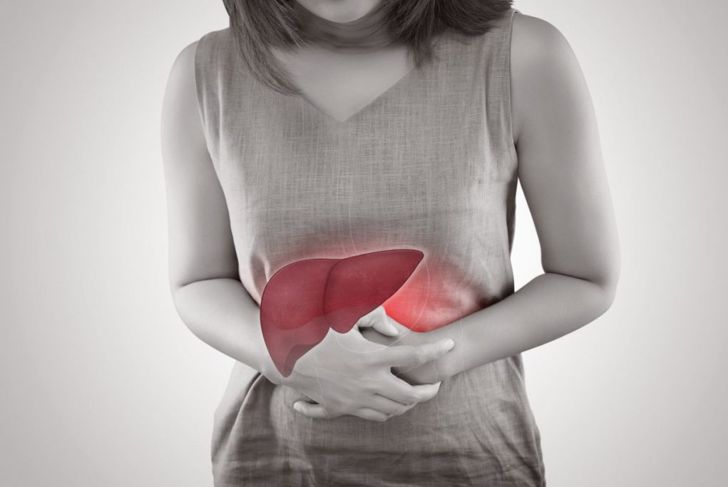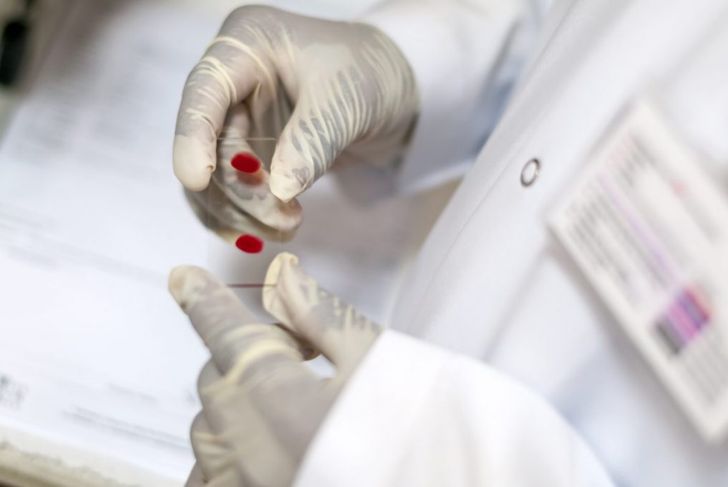Doctors may refer to fulminant hepatitis as fulminant hepatic failure or acute liver failure. Regardless of the name, this state of rapid and severe liver failure can be fatal. Liver failure occurs when liver cells are damaged and cease to function. Fulminant hepatitis can occur in people with previously diagnosed liver disease, but it may also happen in people without any known liver problems. The deterioration of the liver may happen over days or weeks, depending on the cause.
Common Causes
Medical professionals cannot identify the cause of many cases of fulminant hepatitis. The most frequent known cause is an overdose of a non-NSAID over-the-counter pain reliever. One excessive dose can cause immediate liver failure, or too-large doses spread over a few days can cause liver failure at a slower rate. An overwhelming dose of this medication can damage the liver beyond repair.
Other Possible Causes
The Epstein-Barr and herpes simplex viruses can trigger viral-induced fulminant hepatitis. Autoimmune hepatitis occurs when the immune system attacks liver cells. Certain cancers can form tumors that start in or spread to the liver. Budd-Chiari syndrome damages veins and will cause liver failure if there are blockages to the veins around the liver. Wilson’s disease is a genetic disorder that causes copper to build up in the liver and other organs. Once the copper build-up reaches a certain point, the liver can no longer function.
Initial Symptoms
The early symptoms of fulminant hepatitis include feeling unwell or generally ill, fatigue, nausea, vomiting, and stomach pain. As fulminant hepatitis progresses, the skin and whites of the eyes become jaundiced. Other symptoms are confusion, a strong desire to sleep, personality or behavioral changes, bleeding or bruising from minor bumps or injuries, and swelling in the stomach area.
Progression
As fulminant hepatitis progresses, the effects become life-threatening. Hepatic encephalopathy causes damage and declining function in the brain. The progression from the first appearance of jaundice to encephalopathy can occur over days or up to 26 weeks, depending on the cause of liver failure and the person’s age, underlying conditions, and overall health. Kidney failure is also a possible complication of fulminating hepatitis. Some individuals may require dialysis, although the kidneys usually recover.
Disease Process
Hepatic encephalopathy causes cerebral edema and will eventually result in a coma if treatment does not stop the progression. Brain herniation and death are the final results without effective treatment. The exact cause of encephalopathy isn’t entirely understood, but most researchers and professionals believe it relates to a build-up of toxins in the body and brain. These toxins include ammonia, mercaptan, serotonin, and tryptophan. Excessive ammonia is a well-known component of any type of liver disease, and confusion is a common symptom when levels are too high.
Encephalopathy
Encephalopathy occurs in stages. The possibility of survival and recovery is very dependent on how fast encephalopathy progresses and whether or not medical treatment can stop it. Symptoms of the first stage of encephalopathy include euphoria, mild confusion, slurred speech, and inconsistent sleep patterns. The second stage leads to inappropriate behavior and difficulty following conversations. During stage three, the person sleeps continuously, but it is still possible to wake them up. Upon waking, the person may be irritable or violent. Stage four is usually characterized by coma and severe jaundice.
Diagnosis
Diagnosis starts with a physical examination and assessment. Doctors ask about medical history, past or current drug use, and possible exposure to toxins. Medical staff will look for any symptoms of hepatitis and ask basic questions to determine levels of disorientation or confusion. Imaging tests such as an ultrasound, MRI, and CT scan let medical professionals identify liver damage, problems in veins, tumors, and other structural abnormalities. The doctor may also biopsy liver tissue.
Blood and Urine Analysis
Blood and urine analysis are important diagnostic tests. These tests measure many factors related to liver function, including how long it takes for blood to clot. Liver failure severely hinders the body’s ability to form clots because the liver produces many coagulating factors. Esophageal varices are a possibe life-threatening complication of chronic liver disease and may occur during fulminant hepatitis as well. Varices are swollen blood vessels that can rupture and bleed copiously.
Treatment for Fulminant Hepatitis
People with fulminant hepatitis usually require treatment in an intensive care unit. Antidotes to counter some common medication overdoses or toxins are available. If doctors know the cause of fulminant hepatitis, they may administer an antidote to the specific toxin or substance. Activated charcoal is another common treatment to remove toxins.
Prognosis
Many factors determine the prognosis or long-term outlook for people with fulminant hepatitis. A person in good health with an acute case of fulminant hepatitis can make a full recovery. As a general rule, treatment before the third stage of encephalopathy leads to recovery without permanent brain damage. Once a person enters the third and fourth stages of encephalopathy, permanent brain damage is likely, and survival is uncertain. Most cases of fulminant hepatitis in the United States have a good outcome. The liver has some ability to regenerate, although it is much more difficult for the liver to repair itself in cases of chronic liver disease. If liver damage is too severe for recovery, a liver transplant is an option as well.

 Home
Home Health
Health Diet & Nutrition
Diet & Nutrition Living Well
Living Well More
More